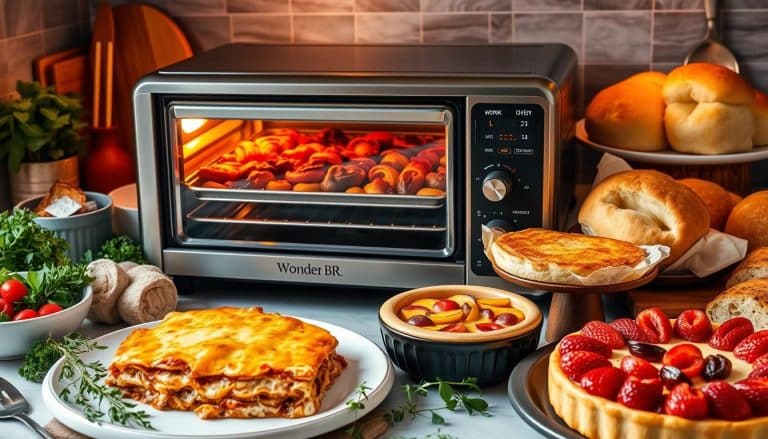Simple Chicken Legs Cooking
You’re about to discover the simplicity of cooking chicken legs. First, season them with salt, pepper, and your favorite herbs, letting the flavors infuse for a few minutes. Then, it’s time to choose a cooking method: pan-frying, oven baking, or grilling. Whichever method you select, the key is to follow basic steps to achieve tender, juicy meat and crispy skin. But, with so many techniques and seasoning options available, you’re probably wondering which approach yields the best results – and that’s exactly what we’ll explore next. The perfect chicken legs are within your reach.
Key Takeaways
- Rinse chicken legs under cold running water and pat dry with paper towels to remove impurities and excess moisture.
- Season chicken legs with salt, pepper, and herbs, and let them sit for a few minutes to allow flavors to penetrate.
- Cook chicken legs using a method such as pan-frying, oven baking, or grilling, and ensure even cooking to prevent overcooking or undercooking.
- Use a thermometer to achieve a safe internal temperature of 165°F, and tent thinner chicken leg parts to prevent overcooking.
- Let cooked chicken legs rest for a few minutes to redistribute their juices and yield a rich, flavorful taste result.
Preparing the Chicken Legs
Rinse the chicken legs under cold running water, then pat them dry with paper towels to remove excess moisture. You want to get rid of any loose bits of skin or cartilage that might be clinging to the surface. Don’t skip this step – it’s essential for creating a crispy exterior later on.
Next, take a closer look at the chicken legs. You might notice some visible fat or connective tissue. If you’re feeling ambitious, you can try to trim some of this away. Just be careful not to cut too closely to the bone. Remember, you’re aim is to tidy up the chicken, not to butcher it.
Now it’s time to season the chicken legs. You can use a simple mixture of salt and pepper, or get creative with herbs and spices. Don’t be shy – sprinkle that seasoning liberally over the surface of the chicken. You can even let it sit for a few minutes to allow the flavors to penetrate the meat.
Once you’ve seasoned the chicken, you’re almost ready to cook. Before you start, take a moment to double-check that everything is in order. Are the chicken legs evenly coated with seasoning? Are there any stray bits of skin or cartilage that you missed? By paying attention to these details, you’ll end up with a delicious, professional-grade finished product. Your prep work is done, and it’s time to move on to the next stage of cooking.
Essential Cooking Techniques
To achieve perfectly cooked chicken legs, you’ll want to master a few key cooking techniques that’ll make all the difference in the finished product. The first technique you should focus on is brining. Soaking the chicken legs in a saltwater brine before cooking will help to keep them juicy and full of flavor. You can dry-brine by sprinkling kosher salt all over the chicken and letting it sit in the fridge for a few hours or wet-brine by submerging the chicken in a saltwater bath.
Next, you should consider the importance of even cooking. Chicken legs have a tendency to cook unevenly, with the thicker parts taking longer to cook than the thinner ones. To combat this, you can use a technique called ‘tenting‘. By covering the thinner parts with foil, you can prevent them from overcooking before the rest of the leg is done.
Another essential technique is temperature control. Chicken legs need to be cooked to an internal temperature of 165°F (74°C) to be safe to eat. Using a meat thermometer will help you guarantee that your chicken is cooked to a safe temperature without overcooking it. By mastering these cooking techniques, you’ll be well on your way to creating perfectly cooked, delicious chicken legs that’ll impress anyone. By following these tips and practicing a bit, you’ll be able to achieve consistently great results and elevate your simple chicken legs cooking.
Pan Frying Chicken Legs
When you’re ready to pan-fry your chicken legs, heat a skillet or sauté pan over medium-high heat, adding a small amount of oil to prevent sticking. You’ll want to use a neutral-tasting oil with a high smoke point, such as canola or avocado oil. While the pan is heating up, season your chicken legs with your desired spices and herbs. Don’t be shy with the seasoning – you want to make sure your chicken is flavorful and delicious.
Once the pan is hot, carefully place the chicken legs in the pan, skin side down (if they have skin). If you’re using boneless chicken legs, you can cook them for about 5-7 minutes on each side, or until they reach an internal temperature of 165°F (74°C). If you’re using bone-in chicken legs, you’ll need to cook them for a bit longer – about 10-12 minutes on each side.
- Don’t overcrowd the pan: Cook the chicken legs in batches if necessary, to guarantee they have enough room to cook evenly.
- Don’t press down on the chicken: Resist the temptation to press down on the chicken with your spatula, as this can cause the juices to be pushed out of the meat.
- Don’t cook at too high a heat: Medium-high heat is ideal for pan-frying chicken legs, as it allows for a crispy exterior and a juicy interior.
- Don’t skip the resting time: Once the chicken is cooked, let it rest for a few minutes before serving to allow the juices to redistribute.
Oven Baked Chicken Legs
Now that you’ve mastered pan-frying chicken legs, it’s time to move on to oven baking, a method that’s just as easy and delicious. To get started, you’ll want to focus on two key areas: seasoning and marinating your chicken legs for maximum flavor, and getting the cooking temperature and time just right. By following a few simple tips, you’ll be on your way to perfectly baked chicken legs that are sure to please.
Seasoning and Marinating Tips
Your oven baked chicken legs’ flavor profile begins with the seasoning and marinating process, which can be as simple as rubbing them with a mix of salt, pepper, garlic powder, and paprika. You can also take it up a notch by adding some herbs and spices to create a more complex flavor profile.
When it comes to marinating, you’ve got options – you can go for a quick 30-minute marinade or a more intense, 24-hour soak. The choice is yours. To marinate your chicken legs, simply place them in a large ziplock bag, pour in your marinade, and seal. Give it a shake, then refrigerate for the desired amount of time.
Here are some seasoning and marinating tips to try:
- Mix it up with yogurt: A yogurt-based marinade can help tenderize the chicken and add tanginess.
- Spice it up with chili flakes: For a spicy kick, add some chili flakes to your seasoning mix or marinade.
- Citrus zest adds brightness: Incorporate lemon or orange zest into your marinade for a burst of citrus flavor.
- Ginger adds depth: Fresh ginger adds warmth and depth to your marinade or seasoning mix.
Cooking Temperature and Time
With your chicken legs seasoned and marinated, it’s time to focus on the cooking process, and getting the temperature and time just right is key to achieving perfectly baked chicken legs. You’ll want to preheat your oven to 400°F (200°C). While your oven is heating up, take a moment to line a baking sheet with aluminum foil or parchment paper, making cleanup a breeze later on.
Once your oven is hot, arrange your chicken legs on the prepared baking sheet in a single layer, ensuring they don’t overlap. This allows for even air circulation and cooking. Now, you’ll bake them for about 30-40 minutes, depending on the size of your chicken legs. A good rule of thumb is to cook them until they reach an internal temperature of 165°F (74°C). After 25 minutes, you can start checking for doneness every 5-10 minutes to avoid overcooking. When done, remove them from the oven, and let them rest for a few minutes before serving. By following these guidelines, you’ll end up with juicy and flavorful oven-baked chicken legs that are sure to impress.
Grilling Chicken Legs Outdoor
Grilling chicken legs outdoors requires some basic preparation to achieve smoky, charred flavor and juicy texture. You’ll want to start by preheating your grill to the right temperature, which is usually around medium-high heat. While the grill is heating up, you can prep your chicken legs by patting them dry with paper towels to remove excess moisture.
Next, you’ll want to oil up the grates to prevent the chicken from sticking. You can use a paper towel dipped in oil to brush the grates. Once the grill is hot, place the chicken legs on the grill and close the lid. Here are some key things to keep in mind while grilling:
- Grill temperature: Make sure the grill is at the right temperature, which is usually around 375°F to 400°F.
- Grill time: Grill the chicken legs for about 5-7 minutes per side, or until they reach an internal temperature of 165°F.
- Flipping: Flip the chicken legs only once or twice to prevent them from tearing apart.
- Resting: Let the chicken legs rest for a few minutes before serving to allow the juices to redistribute.
Choosing the Right Seasonings
Selecting the right seasonings can make or break the flavor of your chicken legs, so it’s essential that you choose seasonings that complement the rich, smoky flavor you’ll get from grilling. When it comes to seasoning your chicken legs, you’ll want to strike a balance between enhancing the natural flavor of the meat and adding a boost of flavor. Start by considering the type of cuisine you’re aiming for – do you want a spicy kick, a herby flavor, or a tangy twist?
If you’re looking for a classic flavor combination, you can’t go wrong with a mix of salt, pepper, and paprika. This trio will enhance the natural flavor of the chicken without overpowering it. If you want to add a bit of heat, throw in some chili powder or cayenne pepper. For a fresher flavor, try combining lemon zest, garlic powder, and dried herbs like thyme or rosemary. Don’t be afraid to experiment and find your own unique seasoning blend.
Tips for Crispy Skin
To achieve perfectly crispy skin, you’ll want to focus on a combination of proper preparation, precise temperature control, and careful cooking techniques. Before cooking, make sure to pat the chicken legs dry with paper towels, paying extra attention to the skin. This helps remove excess moisture, which can prevent the skin from crisping up.
Next, season the chicken legs with your desired spices and herbs, but be gentle not to tear the skin. You can also try air-drying the chicken in the refrigerator for a few hours or overnight to further reduce moisture.
When cooking, you’ll want to use a method that allows for even browning and crisping. Here are some tips to achieve crispy skin:
- Dry-brining: Rub the chicken with kosher salt and let it sit in the refrigerator for a few hours or overnight to help dry out the skin.
- High-heat cooking: Cook the chicken at a high temperature (around 425°F/220°C) to get a nice sear on the skin.
- Don’t overcrowd: Cook the chicken legs in batches if necessary, to guarantee they have enough room to cook evenly and crisp up.
- Don’t stir too much: Resist the temptation to stir or rotate the chicken too much, as this can prevent the skin from developing a nice crust.
Serving Suggestions and Ideas
Now that you’ve mastered the art of achieving crispy skin, it’s time to think about how you’ll serve up those perfectly cooked chicken legs. You’ve got a lot of options, and it really depends on your personal preferences and the overall vibe you’re going for. If you’re looking for something classic and comforting, you can’t go wrong with mashed potatoes and a side of steamed veggies. The creamy texture of the potatoes pairs perfectly with the crunchy skin, and the veggies add a burst of freshness to the dish.
If you’re in the mood for something a bit more adventurous, why not try serving your chicken legs with a side of roasted sweet potatoes and a drizzle of spicy mayo? The sweetness of the potatoes pairs amazingly with the smokiness of the chicken, and the spicy mayo adds a tangy kick. You could also try serving your chicken legs on a bed of quinoa or brown rice, with a side of roasted veggies and a drizzle of your favorite sauce. The possibilities are endless, and it’s really up to you to decide how you want to showcase your culinary skills.
The key is to have fun and be creative with it. Don’t be afraid to experiment with different flavors and combinations – after all, that’s what cooking is all about. So go ahead, get inspired, and show off those perfectly cooked chicken legs!
Frequently Asked Questions
Q1: Can I Refrigerate or Freeze Cooked Chicken Legs for Later Consumption?
You’re wondering if you can refrigerate or freeze cooked chicken legs for later. Yes, you can! Cooked chicken can be safely stored in the fridge for 3-4 days or frozen for up to 4 months.
Q2: How Do I Store Raw Chicken Legs to Prevent Cross-Contamination?
You’ll want to store raw chicken legs in a sealed container at the bottom of your fridge to prevent juices from leaking onto other foods, and make sure to wash your hands thoroughly after handling them.
Q3: What Internal Temperature Ensures Cooked Chicken Legs Are Safe to Eat?
Like a ship traversing treacherous waters, you must chart a safe course when cooking chicken. To avoid foodborne illness, guarantee the internal temperature reaches 165°F (74°C); this magic number is your anchor, holding fast to food safety.
Q4: Can I Use the Same Marinade for Both Chicken and Vegetables?
You can use the same marinade for both chicken and vegetables, but you’ll want to make sure it’s safe to do so, let’s discuss food safety guidelines to guarantee you don’t cross-contaminate between raw meat and veggies.
Q5: How Long Can I Keep Marinated Chicken Legs in the Refrigerator?
"How long is too long? You can keep marinated chicken legs in the fridge for up to two days, but it’s best to cook them within 24 hours for maximum flavor and food safety."






